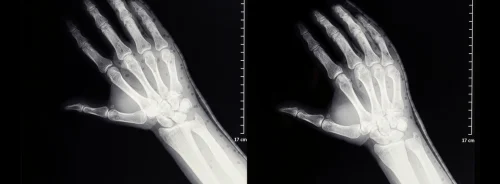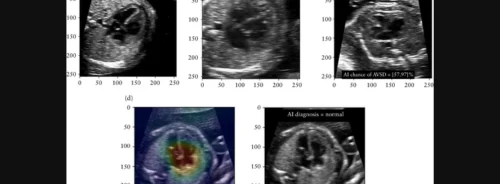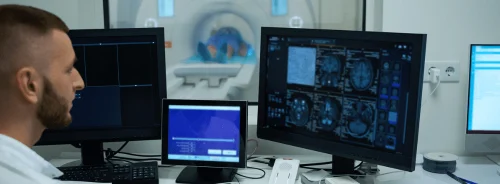HealthManagement, Volume 6 - Issue 5, 2006
The Evolving Ultrasound Market
Author
Dr Jim R. Brown
Senior Director of Clinical
and Technical Marketing
Philips Medical Systems,
Ultrasound
Beyond the heart, researchers are exploring applications for 3D or “volumetric” ultrasound technology to help improve the physician’s diagnostic and treatment decisions. The following are just a few areas in which ultrasound shows real promise for a variety of conditions.
Ultrasound in Oncology
Ultrasound is providing clinicians the ability to more accurately quantify the size and nature of tumours as well as help assess whether they are benign or malignant. The result is earlier and more confident diagnosis by the physician as well as a potential reduction in the number of costly biopsies required.
Ultrasound and the Breast
In the western world, more than 1 in 10 women currently develop breast cancer. Approximately70% of these cancers are a particular type of tumour known as an invasive ductal carcinoma. Currently, the only way to confirm whether these growths are really malignant is to perform a biopsy, an expensive and time-intensive procedure.
A universal characteristic of malignant tumours is that they stimulate a process in the body known as angiogenesis. Microvascular imaging (MVI) using ultrasound is a quick and cost-effective way for clinicians to image these blood vessels surrounding a tumour to determine whether it is malignant or benign. A contrast agent (SonoVue, Bracco Diagnostics Inc.) with a suspension of micro-bubbles is injected into the bloodstream. The MVI then captures a sequence of images that are assembled into a ‘movie’. The resulting image visualises the presence of angiogenesis or not.
3D Breast Imaging
Another way ultrasound is facilitating cost-effective lesion analysis is using ‘volumetric’ imaging, obtaining a full volume of tissue data and examining it in multiple dimensions. Using 3D, the physician can better assess a breast lesion’s borders and characteristics as well as study the surrounding breast tissue that could help in disease management. Visualisation techniques like progressive precision slicing of a volume to generate 2D images can also help the clinician quickly evaluate breast tissue. Future visualisation technology will allow segmentation of the lesion from surrounding tissue and automatically assess characteristics of the lesion to determine mass size, shape, internal properties and orientation to breast architecture.
These lesion quantification technologies may also play a valuable role in therapy and postoperative care. Following a lumpectomy or ablation, they can help differentiate between scar tissue around the surgical site and new tumour growth.
Liver Tumour Ablation
Liver tumour ablation is an evolving application being used by interventional radiologists and oncologists. Using ultrasound guidance, physicians can locate tumours and destroy them without resecting large portions of the liver. Used as a 3D guide, ultrasound can pinpoint the size and location of a liver tumor and guide the placement of an ablation needle that uses a radiofrequency (RF) current to destroy the cancerous tissue. Following the RF ablation procedure, ultrasound imaging helps evaluate and assess the procedure to determine whether it was a success.
Fertility
In patients with infertility or who are experiencing repeated spontaneous abortions, volumetric imaging can help the physician identify the cause(s) and condition(s) that led to infertility. 3D ultrasound is superior to conventional scanning techniques as the entire uterine volume can be acquired and interrogated to produce unique views of the uterus and surrounding anatomy that can help assess malformations that may lead to infertility. Volumetric ultrasound is also useful in performing sonohysterography to examine thickened endometrium, to identify the location and number of polyps, abnormal bleeding or adhesions.
Volumetric multiplanar imaging provides more detailed assessment since it offers a coronal plane view, giving better visualisation of the uterine anatomy to precisely pinpoint the abnormality. The coronal view captured by 3D ultrasound also provides a better image of cornual and cervical ectopic pregnancies.
Live volume imaging allows the acquisition and immediate display of a volume of ultrasound in true real time. Using this new technique clinicians can rotate, look above or under structures without moving the transducer – something not possible using conventional 2D ultrasound. This is especially helpful when evaluating complex anatomical structures and spatial relationships.
Ultrasound and the Musculoskeletal System
Sports medicine, and the viewing of the musculoskeletal system (MSK) has benefited from ultrasound, which provides a safe and powerful modality for viewing superficial soft tissues such as tendon injuries. Ultrasound’s high resolution provides an unbeatable view in diagnosing ruptures, adhesions or tendonitis of the Achilles tendon, biceps, thumb, quadriceps, patellar tendon, or rotator cuff. Ultrasound also is ideal in evaluating the mystery surrounding sports hernias and providing detailed interpretations. The ability to look closely at moving tendons in the hand is of significant clinical benefit to orthopaedic and hand surgeons preparing surgical plans to repair a specific injury.
The most useful role for MSK ultrasound in the clinic is as an extension of a physical examination. Additionally, it can be used to evaluate joint dynamic and static stabilizers to assess joint synovitis or fluid, and to identify the exact site for therapeutic modalities and direct needle placement for aspiration or to deliver local anaesthesia.
Ultrasound is ideal when integrated with MRI and CT. General or vague pain can be imaged using MRI. Once a specific injury is located, ultrasound or CT can be used to make a definitive diagnosis.
Conclusion
In summary, the advent of new technologies such as live volumetric imaging, advanced visualisation and quantification are moving ultrasound from a purely diagnostic imaging tool to one that is aiding the physician in making treatment decisions, guiding procedures and providing costeffective patient management. Ultrasound is rapidly changing the way healthcare is delivered, improving patient care while reducing costs for healthcare providers. The more we as clinicians, interventionalists and surgeons can learn as a result of this technology the greater the impact on disease management and patient outcomes.





